
 |
 |
 |
 |
 |
 |
 |
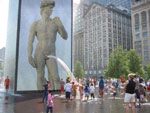
 The National Portrait Gallery has reported that the Grafton portrait, long thought to depict Shakespeare as a young man, doesn't depict him at all. They don't know who the guy in the painting is. The portrait apparently served as the inspiration for the portrayal of Shakespeare in the movie Shakespeare in Love.
The National Portrait Gallery has reported that the Grafton portrait, long thought to depict Shakespeare as a young man, doesn't depict him at all. They don't know who the guy in the painting is. The portrait apparently served as the inspiration for the portrayal of Shakespeare in the movie Shakespeare in Love.
 Artists work in all different kinds of mediums. Some work in oil. Others in stone. Dave Powell's medium is cats. He breeds cats and then displays them as art in plastic containers. He tries to breed for mutations such as polydactylism. He seems a little sensitive that people won't think his cat-in-a-box displays qualify as art, but he argues that they are since anything created with 'artistic intent' is art. I actually disagree. I think that art is whatever art critics define as art. In other words, it's up to the audience to decide what qualifies as art, not the artist. But as a cat lover, I'm perfectly to happy to regard cats as art.
Artists work in all different kinds of mediums. Some work in oil. Others in stone. Dave Powell's medium is cats. He breeds cats and then displays them as art in plastic containers. He tries to breed for mutations such as polydactylism. He seems a little sensitive that people won't think his cat-in-a-box displays qualify as art, but he argues that they are since anything created with 'artistic intent' is art. I actually disagree. I think that art is whatever art critics define as art. In other words, it's up to the audience to decide what qualifies as art, not the artist. But as a cat lover, I'm perfectly to happy to regard cats as art.
 The self-proclaimed 'art terrorist' Banksy made headlines back in March for sneaking his own work into various New York art galleries. Now he's done it again. He managed to sneak some faux prehistoric rock art into the British Museum. The rock art depicted a caveman pushing a shopping trolley. It hung in the British Museum for two days before being detected. The British Museum has now loaned the rock art back to Banksy who is displaying it at his own show in London. But they expect to get it back eventually.
The self-proclaimed 'art terrorist' Banksy made headlines back in March for sneaking his own work into various New York art galleries. Now he's done it again. He managed to sneak some faux prehistoric rock art into the British Museum. The rock art depicted a caveman pushing a shopping trolley. It hung in the British Museum for two days before being detected. The British Museum has now loaned the rock art back to Banksy who is displaying it at his own show in London. But they expect to get it back eventually.
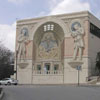 |
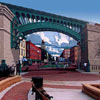 |
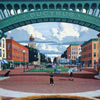 |
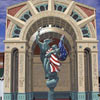 |
 |
 |
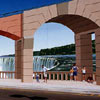 |
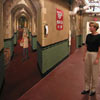 |
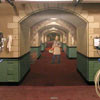 |
 |
 |
 |
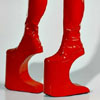 |
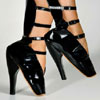 |
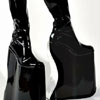 |
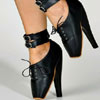 |
 |
 It's already well known that Michelangelo dabbled in art forgery. That's not disputed. For instance, there's his famous forgery of the Sleeping Cupid. However, Lynn Catterson of Columbia University thinks that a much more high-profile forgery should be attributed to him. She believes that Michelangelo forged The Laocoon, which has long been regarded as one of the most important pieces of ancient Greek sculpture in existence. She points out that Michelangelo was present when The Laocoon was unearthed in 1506. She has promised to provide further proof to back up her allegation at a lecture today, as well as in a book she's submitted for publication. (thanks to Jelena for the link)
It's already well known that Michelangelo dabbled in art forgery. That's not disputed. For instance, there's his famous forgery of the Sleeping Cupid. However, Lynn Catterson of Columbia University thinks that a much more high-profile forgery should be attributed to him. She believes that Michelangelo forged The Laocoon, which has long been regarded as one of the most important pieces of ancient Greek sculpture in existence. She points out that Michelangelo was present when The Laocoon was unearthed in 1506. She has promised to provide further proof to back up her allegation at a lecture today, as well as in a book she's submitted for publication. (thanks to Jelena for the link)
 Some guy (I can't find his name) has put together a huge and fascinating collection of examples of 'adventure art'. Many of the examples he describes are basically elaborate pranks. Some of the stuff is completely insane. Many of the stunts seem to end with the artist's arrest. I haven't had the time to read all of it, but here are a few samples that caught my eye:
Some guy (I can't find his name) has put together a huge and fascinating collection of examples of 'adventure art'. Many of the examples he describes are basically elaborate pranks. Some of the stuff is completely insane. Many of the stunts seem to end with the artist's arrest. I haven't had the time to read all of it, but here are a few samples that caught my eye: In 2001 artist Gordon Young placed a block of sculpted granite in Carlisle's Tullie House Museum. The granite is inscribed with an ancient curse against local highwaymen and robbers. But some people in the city feel that ever since the 'cursing stone' was placed there, bad luck has plagued the city. "Livestock herds around the city on the border with Scotland were wiped out by foot-and-mouth disease, there has been a devastating flood, factories have closed, a boy was murdered in a local bakery and Carlisle United soccer team dropped a league." So now a local politician has introduced a bill to remove the Cursing Stone and have it destroyed, in the belief that this will bring good luck back to Carlisle. The suggestion has sparked quite a bit of controversy, as well as an angry response from the artist. Personally I think that if Carlisle wants to get rid of its bad luck it should stop fooling around with removing stones and go ahead and burn a witch. After all, that seemed to work for Salem. Didn't it?
In 2001 artist Gordon Young placed a block of sculpted granite in Carlisle's Tullie House Museum. The granite is inscribed with an ancient curse against local highwaymen and robbers. But some people in the city feel that ever since the 'cursing stone' was placed there, bad luck has plagued the city. "Livestock herds around the city on the border with Scotland were wiped out by foot-and-mouth disease, there has been a devastating flood, factories have closed, a boy was murdered in a local bakery and Carlisle United soccer team dropped a league." So now a local politician has introduced a bill to remove the Cursing Stone and have it destroyed, in the belief that this will bring good luck back to Carlisle. The suggestion has sparked quite a bit of controversy, as well as an angry response from the artist. Personally I think that if Carlisle wants to get rid of its bad luck it should stop fooling around with removing stones and go ahead and burn a witch. After all, that seemed to work for Salem. Didn't it?
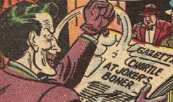 A series of scans has appeared on the scans_daily LiveJournal blog, apparently from an early Batman comic (Batman #66). It details a 'boner' made by the Joker, and his subsequent efforts to force Batman 'into a boner'. The word boner is repeated so often that it seems like it has to be a joke, especially when you read lines such as "Gotham City will rue the day it mentioned the word Boner!" Perhaps someone photoshopped the word 'boner' into an issue of Batman. But I don't think so. I think it's real, although I can't be sure since I don't have a copy of that particular Batman comic (in fact, I don't have any Batman comics). The cover of that issue can be seen here. It's titled 'The Joker's Comedy of Errors!' So the issue itself is real, and 'boner' can mean an error. I think that it's only in recent decades that boner has come to predominantly refer to something else.
A series of scans has appeared on the scans_daily LiveJournal blog, apparently from an early Batman comic (Batman #66). It details a 'boner' made by the Joker, and his subsequent efforts to force Batman 'into a boner'. The word boner is repeated so often that it seems like it has to be a joke, especially when you read lines such as "Gotham City will rue the day it mentioned the word Boner!" Perhaps someone photoshopped the word 'boner' into an issue of Batman. But I don't think so. I think it's real, although I can't be sure since I don't have a copy of that particular Batman comic (in fact, I don't have any Batman comics). The cover of that issue can be seen here. It's titled 'The Joker's Comedy of Errors!' So the issue itself is real, and 'boner' can mean an error. I think that it's only in recent decades that boner has come to predominantly refer to something else. For almost twenty years Glaswegians have enthusiastically upheld a tradition of placing traffic cones on top of a statue of the Duke of Wellington that stands in the city center. You can even buy postcards and t-shirts displaying a cone-wearing Wellington. But now the fun might come to an end on account of art historian Gary Nisbet who claims that the cone prank threatens to seriously damage the 160-year-old statue. He's campaigning to get people who climb up on the statue charged with vandalism. Unfortunately this would make a number of the city councillors vandals. Nisbet's proposal doesn't seem to be going over well at all with the residents of Glasgow, most of whom seem to think the cone is the best thing about the statue.
For almost twenty years Glaswegians have enthusiastically upheld a tradition of placing traffic cones on top of a statue of the Duke of Wellington that stands in the city center. You can even buy postcards and t-shirts displaying a cone-wearing Wellington. But now the fun might come to an end on account of art historian Gary Nisbet who claims that the cone prank threatens to seriously damage the 160-year-old statue. He's campaigning to get people who climb up on the statue charged with vandalism. Unfortunately this would make a number of the city councillors vandals. Nisbet's proposal doesn't seem to be going over well at all with the residents of Glasgow, most of whom seem to think the cone is the best thing about the statue.